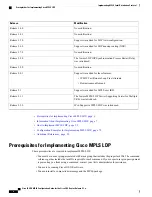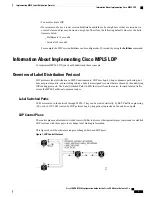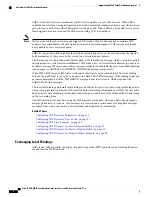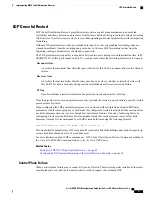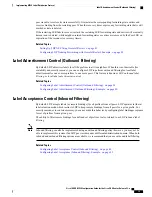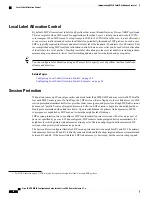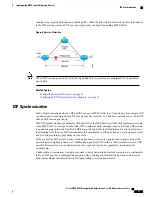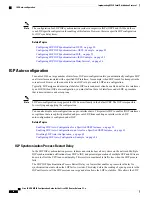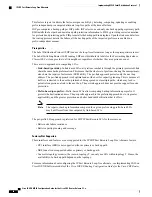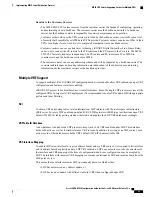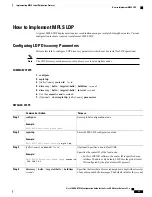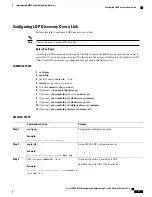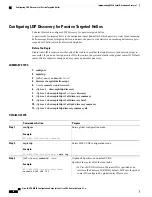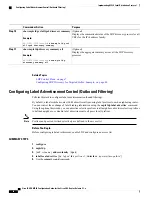
process failure to be less stressful, since IGPs receive all the sync-up events in one bulk. This means that IGP
is required to run the SPF and LSAs only one time with an overall view of the sync-up events.
By default the IGP Synchronization Process Restart Delay is disabled and can be enabled by running the
configuration command
mpls ldp igp sync delay on-proc-restart
.
Note
Related Topics
Configuring LDP IGP Synchronization Process Restart Delay, on page 58
LDP Nonstop Routing
LDP nonstop routing (NSR) functionality makes failures, such as Route Processor (RP) or Distributed Route
Processor (DRP) failover, invisible to routing peers with minimal to no disruption of convergence performance.
By default, NSR is globally enabled on all LDP sessions except AToM.
A disruption in service may include any of these events:
•
Route processor (RP) or distributed route processor (DRP) failover
•
LDP process restart
•
In-service system upgrade (ISSU)
•
Minimum disruption restart (MDR)
Unlike graceful restart functionality, LDP NSR does not require protocol extensions and does not force
software upgrades on other routers in the network, nor does LDP NSR require peer routers to support
NSR.
Note
Process failures of active TCP or LDP results in session loss and, as a result, NSR cannot be provided unless
RP switchover is configured as a recovery action. For more information about how to configure switchover
as a recovery action for NSR, see
Configuring Transports
module in
Cisco IOS XR IP Addresses and Services
Configuration Guide for the Cisco CRS Router
.
Related Topics
Configuring LDP Nonstop Routing, on page 63
IP LDP Fast Reroute Loop Free Alternate
The IP Fast Reroute is a mechanism that enables a router to rapidly switch traffic, after an adjacent link failure,
node failure, or both, towards a pre-programmed loop-free alternative (LFA) path. This LFA path is used to
switch traffic until the router installs a new primary next hop again, as computed for the changed network
topology.
The goal of LFA FRR is to reduce failure reaction time to 50 milliseconds by using a pre-computed alternate
next hop, in the event that the currently selected primary next hop fails, so that the alternate can be rapidly
used when the failure is detected.
Cisco IOS XR MPLS Configuration Guide for the Cisco CRS Router, Release 5.1.x
19
Implementing MPLS Label Distribution Protocol
LDP Nonstop Routing


